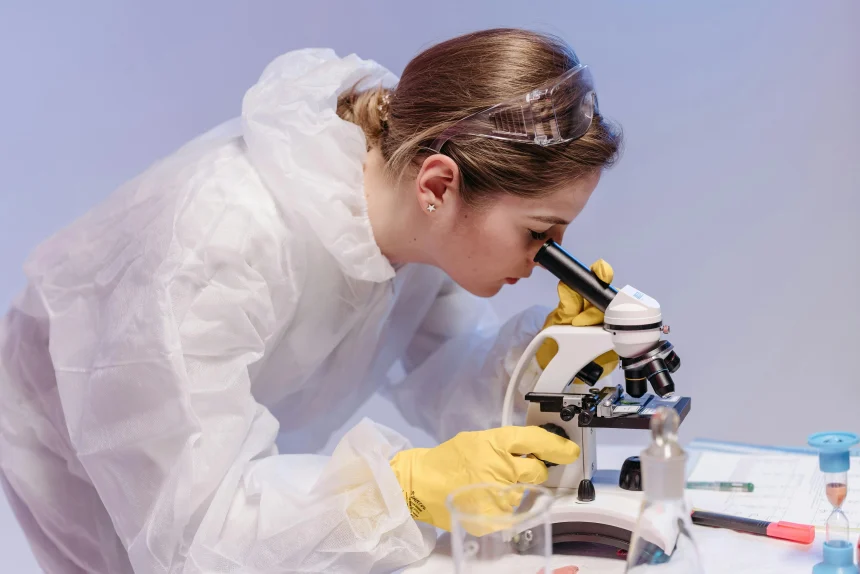Introduction
In an age where forensic science and genetic research play pivotal roles in solving mysteries and advancing our understanding of human biology, even the simplest items can hold significant value. Consider a hairbrush: an everyday object that carries more than just hair strands; it can unlock insights into identity, genetics, and even forensic investigations. However, the process of collecting hair samples from brushes irb guidelines isn’t merely about gathering data. It is a complex endeavor intertwined with ethical considerations, strict methodologies, and adherence to established regulations. This article explores the essential guidelines set forth by Institutional Review Boards (IRBs) for collecting hair samples from brushes.
Understanding the Role of IRBs
What is an IRB?
An Institutional Review Board (IRB) is a committee that ensures research involving human subjects is conducted ethically and responsibly. The primary purpose of an IRB is to protect the rights and welfare of participants involved in research studies. It serves as a regulatory body that reviews research proposals, ensuring that they adhere to ethical standards and legal requirements.
The Importance of IRB Oversight
When collecting hair samples from brushes, understanding and following IRB guidelines is crucial. These guidelines serve multiple functions:
- Protection of Participants: Ensuring that participants are informed about the nature of the research and its potential risks.
- Ethical Conduct: Guaranteeing that the research is conducted with integrity and respect for individuals.
- Quality Assurance: Ensuring that research methodologies are sound and that the data collected is reliable.
The Process of Collecting Hair Samples
Developing a Research Proposal
The journey of collecting hair samples from brushes begins with a well-crafted research proposal. This document outlines the study’s objectives, methodology, and significance. A solid proposal should contain the following elements:
- Research Objectives: Clearly state the purpose of collecting hair samples and how they will contribute to the overall research goals.
- Methodology: Detail the methods for collecting hair samples, including how brushes will be selected, the collection techniques used, and how samples will be stored.
- Significance: Explain the importance of the research and how it will contribute to scientific knowledge or forensic analysis.
Participant Consent
One of the cornerstones of IRB guidelines is obtaining informed consent from participants. When researchers plan to collect hair samples from brushes, they must ensure that participants are fully aware of the study’s purpose, procedures, and potential risks.
- Informed Consent Process: Researchers must provide participants with a consent form that explains the study in understandable terms. This form should include:
- Purpose of the study
- Description of the procedures involved in collecting hair samples from brushes
- Potential risks and benefits
- Assurance of confidentiality and data protection
Participants should have the opportunity to ask questions and withdraw from the study at any time without penalty. Ensuring that participants feel comfortable and informed is critical to maintaining ethical standards.
Minimizing Risks
The IRB will closely examine the risks involved in collecting hair samples. Researchers must develop strategies to minimize any potential risks to participants. Here are some considerations:
- Physical Risks: Ensure that the collection process is non-invasive and poses no harm to participants. Researchers should be trained in proper collection techniques to avoid causing discomfort.
- Psychological Risks: Be sensitive to participants’ feelings regarding the collection of personal biological material. Researchers should provide support and counseling resources if necessary.
- Confidentiality Risks: Protecting participant information is crucial. Data should be stored securely, and any identifying information should be removed from the data set whenever possible.
Methodology for Collecting Hair Samples
Selecting Appropriate Brushes
Selecting the right brushes for hair sample collection is critical. Researchers must consider several factors:
- Type of Brush: Different brushes may yield different types of hair samples. Forensic brushes, for example, are designed specifically for collecting hair and fibers in a controlled manner.
- Context of Use: Understanding how the brush was used can provide context for the hair samples. Was it used by a particular individual or in a specific setting? This information can be invaluable for both forensic investigations and research.
Techniques for Sample Collection
The process of collecting hair samples from brushes requires careful attention to detail. Here are effective methods:
- Visual Inspection: Before collection, researchers should perform a thorough visual inspection of the brush to identify visible hair. This initial step helps assess the sample’s quality and quantity.
- Sterile Tools: Researchers should use sterile tools, such as tweezers or sterile swabs, to extract hair from the brush. This practice minimizes contamination risks and ensures that the samples collected are as pure as possible.
- Documentation: Meticulous documentation of each step in the collection process is essential. Researchers should note:
- Date and time of collection
- Location and context of the brush’s use
- Observations made during the collection process
- Sample Preservation: Once collected, hair samples should be placed in appropriate containers that prevent degradation. Samples should be labeled clearly with relevant information to ensure traceability.
Ethical Considerations in Research
Ensuring Data Privacy
When collecting hair samples from brushes irb guidelines, researchers must prioritize data privacy. This includes implementing robust measures to protect participants’ identities and ensuring that collected data is stored securely. Here are some best practices:
- Anonymization: Where possible, researchers should anonymize data to protect participants’ identities. This means removing any identifying information from the data set.
- Secure Storage: Data should be stored in secure locations with restricted access to protect participant information. This may involve using password-protected digital files or locked physical storage for paper records.
Responsible Reporting of Findings
Once the research is complete, responsible reporting of findings is essential. Researchers must present their results accurately, ensuring that the conclusions drawn from the collected hair samples are well-supported by the data. Adhering to IRB guidelines in reporting includes:
- Transparency: Researchers should be transparent about their methods and findings. This includes disclosing any limitations of the study and potential biases that may have affected the results.
- Academic Integrity: Researchers must avoid plagiarism and ensure that all sources are properly cited. Maintaining academic integrity is crucial for building trust in the research community.
Challenges in Collecting Hair Samples
Legal and Ethical Challenges
While collecting hair samples from brushes can yield valuable insights, researchers may face legal and ethical challenges throughout the process. Some of these challenges include:
- Informed Consent Difficulties: Obtaining informed consent can be challenging, especially if participants are unaware of the implications of providing biological samples. Researchers must be proactive in ensuring that consent forms are clear and comprehensible.
- Ownership of Samples: Issues regarding the ownership of collected samples can arise, particularly in forensic contexts. Researchers must establish clear guidelines about who owns the samples and how they can be used in the future.
Handling Special Cases
Certain situations may require additional consideration when collecting hair samples from brushes:
- Vulnerable Populations: Researchers must be particularly sensitive when working with vulnerable populations, such as minors or individuals with cognitive impairments. Extra precautions must be taken to ensure that their rights are protected and that they fully understand the research process.
- Cultural Sensitivity: Different cultures may have varying views on the collection of biological samples. Researchers should be aware of these perspectives and approach participants with respect and understanding.
The Role of Technology in Sample Collection
Innovations in Forensic Science
As forensic science advances, technology plays a vital role in enhancing the process of collecting hair samples from brushes. Here are some ways technology is shaping this field:
- Automated Sample Collection: New automated tools can assist researchers in collecting hair samples more efficiently, reducing human error and improving sample integrity.
- Digital Documentation: Utilizing digital tools for documentation allows for more accurate record-keeping and data management, ensuring that all details of the collection process are readily accessible and organized.
- Advanced Analysis Techniques: Technologies such as DNA sequencing and genetic profiling enable researchers to analyze hair samples with greater precision. This can lead to more accurate conclusions and insights derived from the collected data.
Future Directions in Research
Expanding the Scope of Research
The practice of collecting hair samples from brushes opens up exciting opportunities for future research. Potential areas of exploration include:
- Genetic Diversity Studies: Researchers can use hair samples to study genetic diversity within populations, contributing to fields such as anthropology and evolutionary biology.
- Forensic Applications: The insights gained from analyzing hair samples can have significant implications for forensic investigations, aiding law enforcement in solving crimes and understanding criminal behavior.
- Health and Wellness: Hair samples can provide valuable information about an individual’s health, diet, and exposure to environmental toxins. Future research can explore these connections further, enhancing our understanding of how hair reflects overall health.
Conclusion
The process of collecting hair samples from brushes irb guidelines is more than a simple scientific task; it is a multifaceted endeavor that requires adherence to rigorous IRB guidelines. By understanding the importance of informed consent, minimizing risks, and ensuring data privacy, researchers can conduct their studies ethically and responsibly. The guidelines for collecting hair samples from brushes are not merely bureaucratic hurdles; they are essential for ensuring the integrity of the research process and the protection of participants’ rights.
As forensic methodologies and genetic research continue to evolve, the role of ethical oversight through IRBs becomes even more critical. Collecting hair samples from brushes within the framework of these guidelines will not only enhance the quality of research but also foster trust between researchers and participants. This trust is essential as we strive to unlock the wealth of knowledge hidden within each strand of hair, paving the way for groundbreaking discoveries and advancements in forensic science and human biology.
In conclusion, embracing the guidelines for collecting hair samples from brushes ensures that researchers approach their work with integrity and respect. This commitment to ethical practices will ultimately lead to more robust findings, contributing to the broader scientific community and enhancing our understanding of the complexities of human biology and forensic investigations.
Frequently Asked Questions (FAQs)
What are IRB guidelines for hair sample collection?
IRB guidelines ensure ethical standards in research, requiring informed consent, risk minimization, and participant confidentiality.
Why is informed consent important in this process?
Informed consent is crucial because it ensures participants understand the research’s purpose, procedures, risks, and their rights before participation.
How can researchers minimize risks when collecting samples?
Researchers can minimize risks by using non-invasive techniques, ensuring participant comfort, and implementing strict data privacy measures.
What should be included in the research proposal?
A research proposal should outline the study’s objectives, methodology for collecting samples, and the significance of the research findings.
What are some future research opportunities in this field?
Future research may include genetic diversity studies, forensic applications, and health assessments based on hair sample analysis.





